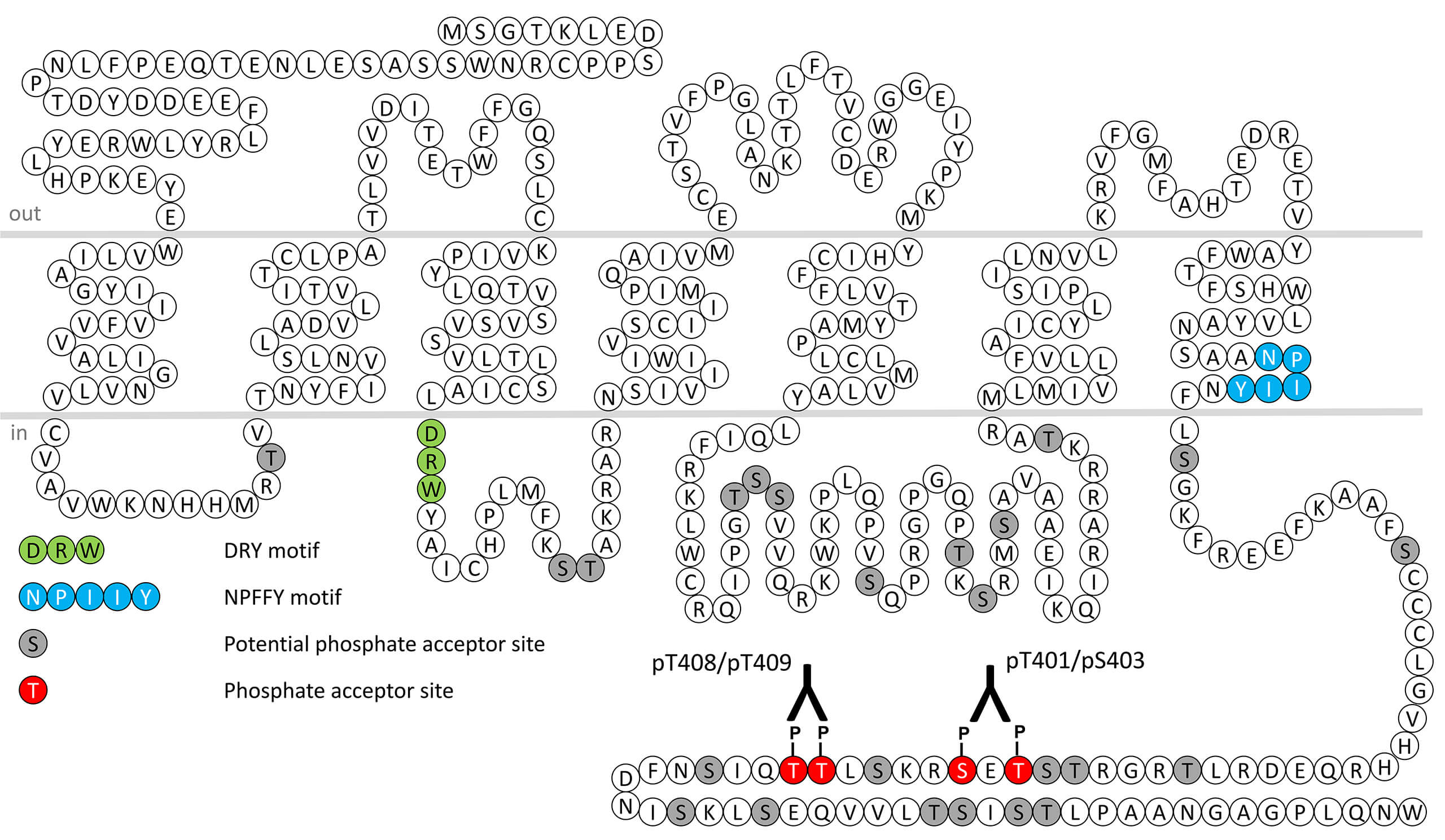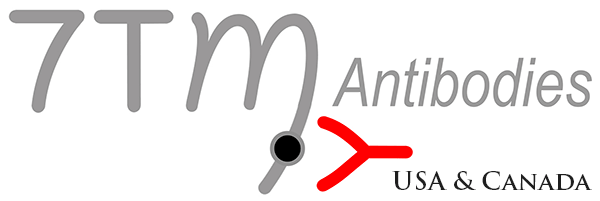Orexin Receptor 2 Antibodies

OX2 receptors are found throughout vertebrates and, like OX1 receptors, are expressed in brainstem and striatal nuclei, with additional expression in arousal-promoting histaminergic nuclei. Both orexin-A and -B have nearly equal affinity for OX2 receptors (IC50s of 38 and 36 nM, respectively), and elevate intracellular calcium levels through activation of Gq and phospholipase C activity. OX2 receptors predominantly mediate the control of arousal induced by orexin neuropeptides, based on results from dog and rodents. OX2 receptor desensitization, β-arrestin recruitment and internalization are regulated by phosphorylation of carboxyl-terminal threonine401/serine403 (pT401/pS403-OX2) and threonine408/threonine409 (pT408/pT409-OX2). This nomenclature refers to the human OX2. This phosphorylation motif is highly conserved across species and identical in mice and rats. For more information on OX2 pharmacology please refer to the IUPHAR database. For further reading refer to:
Scammell TE, Winrow CJ. Orexin receptors: pharmacology and therapeutic opportunities. Annu Rev Pharmacol Toxicol. 2011;51:243-66. doi: 10.1146/annurev-pharmtox-010510-100528. PMID: 21034217
Coleman P, de Lecea L, Gotter A, Hagan J, Hoyer D, Kilduff T, Kukkonen JP, Porter R, Renger J, Siegel JM, Sutcliffe G, Upton N, Winrow CJ. Orexin receptors (version 2019.3) in the IUPHAR/BPS Guide to Pharmacology Database. IUPHAR/BPS Guide to Pharmacology CITE. 2019; 2019(3). Available from: https://doi.org/10.2218/gtopdb/F51/2021.3.
 pT401/pS403-OX2 (phospho-Orexin Receptor 2...
pT401/pS403-OX2 (phospho-Orexin Receptor 2...  pT408/pT409-OX2 (phospho-Orexin Receptor 2...
pT408/pT409-OX2 (phospho-Orexin Receptor 2... 

